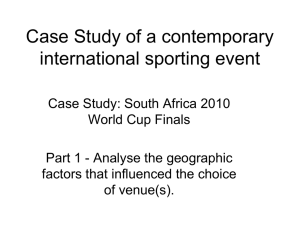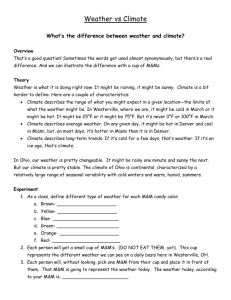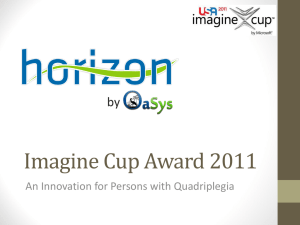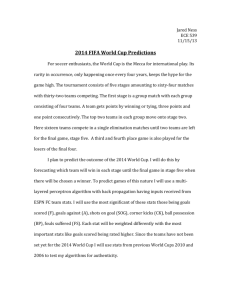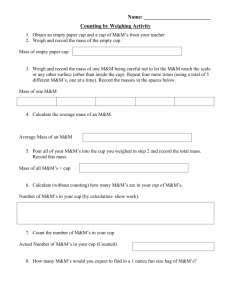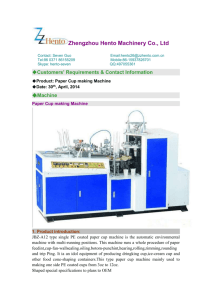5 E Model Presentation
advertisement
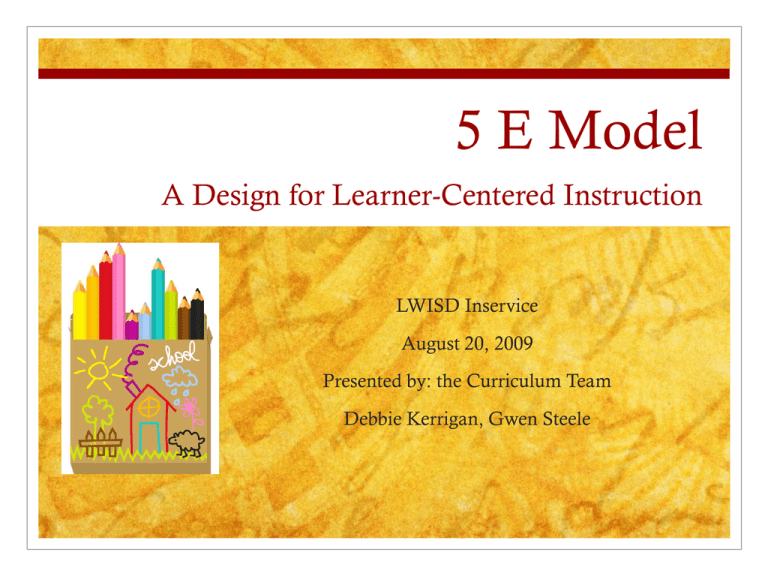
5 E Model A Design for Learner-Centered Instruction LWISD Inservice August 20, 2009 Presented by: the Curriculum Team Debbie Kerrigan, Gwen Steele Before we start! • What do you know about the 5E’s? • Create a List of the 5E’s in order, write down a word that could describe each stage. “Every teacher a leader, every leader a teacher, and every child a success” -Working on the Work, Schlechty 5E Instructional Model • Grounded in solid educational and brain research • Design of this model can be traced back to the early 1900’s with Johann Herbart. • 5E Model is based from the SCIS Model of Instruction by researchers Atkins and Karplus in 1967. • 5E Model was originally proposed by BSCS (Biological Science Curriculum Study) in the late1980’s. CSCOPE has determined that the 5 E Model has been around since 1889. Constructivism “Constructivism is a philosophy about learning that proposes learners need to build their own understanding of new ideas.” source: http://iisme.5ecommunity.org/index.php?area_id=569 Is your school culture a culture of constructivism? Why 5E? • Tell me –I forget • Show me –I remember • Involve me–I understand Students come to the classroom with ideas about how the world works. If their initial understanding is not engaged, they may fail to grasp new concepts and information. -How People Learn Science Process Skills Observing Communicating Classifying Measuring Relating objects in space & time Predicting Inferring Controlling variables Defining operationally Experimenting Engage Evaluate Explore 5 E’s Science Lesson Elaborate Explain Engage: Puff Cup Activity The Set Up: • Form groups ( 2 groups of 6 per table) • Select team members to be in charge of 1 person to move the puff cup –1 timer ( a person wearing a watch) 1 –recorder, other team members are encouragers. Materials: Recording sheet, puff cup packet with tape measure, bottle and cup The Challenge: • You will have 15 seconds to see how far you can move your cups on your table. • You may not touch the cup. The only object that can move the cup is the air from the bottle. • First, estimate how far you think your cup will move in cm. Then test and measure the distance the cup traveled in centimeters. Engage Activity which will focus student’s attention, stimulate their thinking, and access prior knowledge. Student asks questions such as, Why did this happen? What do I already know about this? What have I found out about this? Shows interest in the topic. Demonstration Reading Free Write Analyze a Graphic Organizer KWL Brainstorming Explore: Push or Pull? In groups of (3-4) create a Venn Diagram: Push, Pull or Both Steps: 1 –Say the object’s name 2 –Act out the movement 3 –Decide if it is a push, pull or both 4 -Sort Cards into Venn Diagram Explore Activity which gives students time to think and investigate/test/make decisions/problem solve, and collect information. Perform an Investigation Read Authentic Resources to Collect Information Solve a Problem Construct a Model What does Explain look like? You will be assigned a part of the lesson to study as a group. - Page 6-8 –Start Your Engines - Page 8 –Downhill all the way - Page 10 Rubber Meets the Road Explain Activity which allows students to analyze their exploration. Student’s understanding is clarified and modified through a reflective activity. Student Analysis & Explanation Supporting Ideas with Evidence Structured Questioning Reading and Discussion Teacher Explanation Thinking Skill Activities: compare, classify, error analysis What does Elaborate Look like? What the teacher does that is consistent with this model: *Looks for concepts connecting with other concepts/topics and/or with other content areas. *Asks probing questions to help students see relationships between concept/topic and other content areas. What the student does that is consistent with this model: *Makes connections and sees relationships of the concept/topic in other content areas. *Forms expanded understanding of original concepts/topics. *Makes connections of concept/topic to real world situations. Elaborate Activity which expands and solidifies student thinking and/or applies it to a real-world situation. Problem Solving Decision Making Experimental Inquiry Thinking Skill Activities: compare, classify, apply The Important Book The important thing about gravity is that it is always there. It is invisible but it is something we all share. It pulls things down through the air. But the important thing about gravity is that it is always there. Now It’s Your Turn… As a table group, create your own poem based on the Important Book pattern that describes something you learned today… Evaluate Activity which allows the teacher and student to assess student performance and/or understandings of concepts, skills, processes, and applications. Any of the Previous Activities Develop a Scoring Tool or Rubric Performance Assessment Produce a Product Journal Entry Portfolio Evaluate –7-9-11 L –Learn (move to 7 different people, then share what you learned) V –Value (move to 9 different people, then share something you value from the lesson) P -Plan/Promise (move to 11 different people and share what you plan to take back & use) 5E and Students •How does this model benefit students? • BSCS research study showed 96% increase in student interest after implementing the 5E instructional model. References Montgomery Public Schools Harlen, W. (1985) Primary Science: Taking the Plunge Trowbridge, L. W., Bybee, R. W., & Powell, J. C. (2000). Teaching secondary school science: Strategies for developing scientific literacy Henning & Shinners, 2009, CSCOPE Conference, San Antonio, TX


